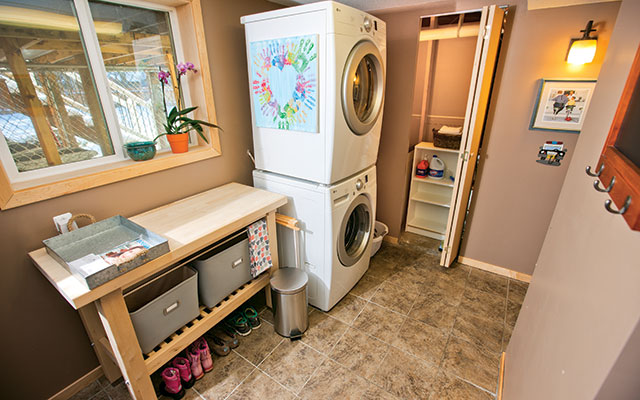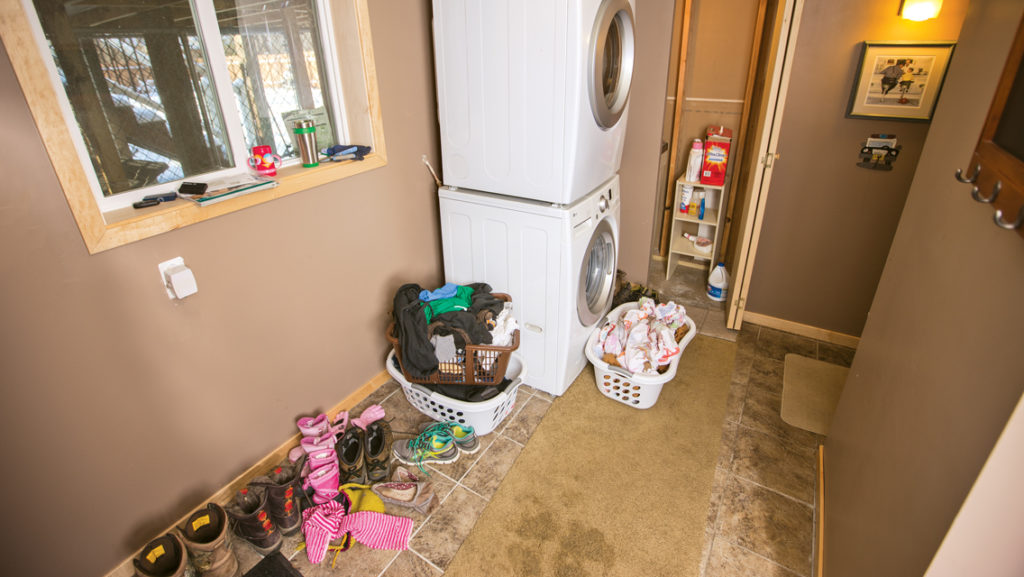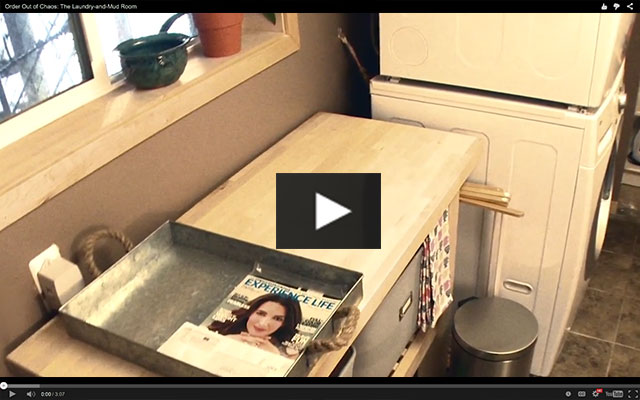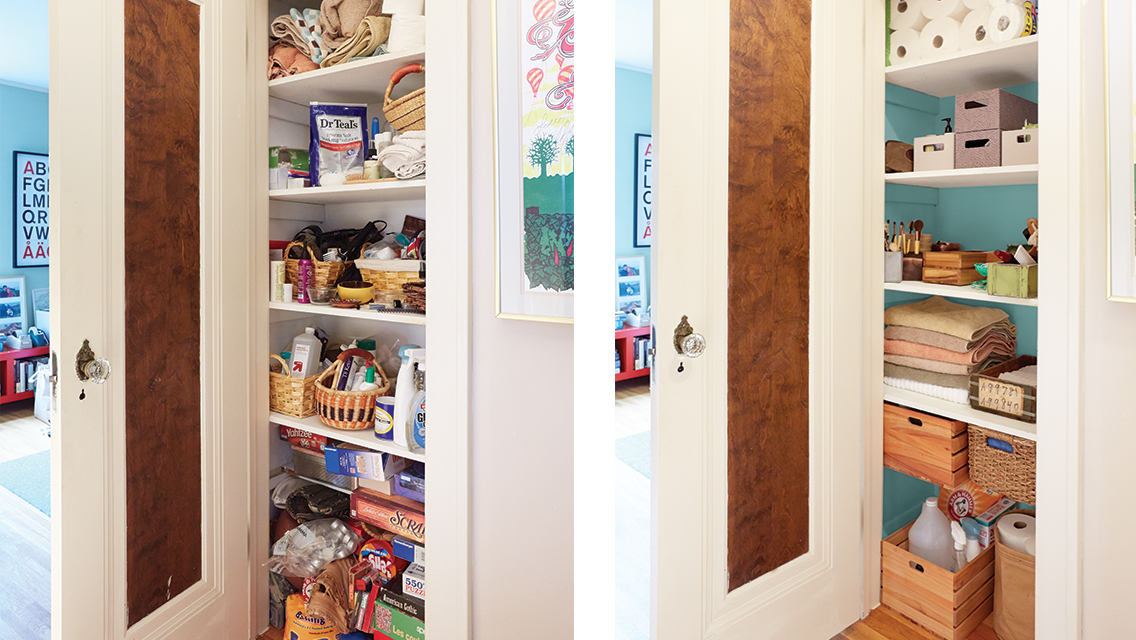Many people don’t enter their homes through the front door. They come in through the side or back, often into small spaces that serve double and triple duty.
This is the case for Experience Life’s senior director of content, Jamie Martin, a positive-minded person who nonetheless confessed to “hating” the combination laundry-and-mud room just off her home’s tuck-under garage. In the 6-x-11-foot space, her family’s shoes and boots mingled with laundry baskets and bags on the floor. Tripping over stuff on their way in and out of their home was a way of life — and a constant source of irritation. Our goal was to transform this space to be welcoming and functional, whether for folding laundry or just passing through.
Clearing the Way
The first thing I do in any decluttering project is determine what isn’t working in a space. For Jamie, that was almost everything.
Her family of four enters the house here (usually multiple times a day), yet there was no place to set down bags or keys. Haphazard rugs weren’t wide enough to accommodate more than one person taking off shoes or boots. Once off, footwear and gear remained scattered throughout the room. The entryway was an obstacle course.
Laundry gets done here, too, but there was no place for baskets except in front of the machines, also smack dab in the path of anyone coming or going. No surfaces were available for sorting or folding clothes, and essentials like the iron and ironing board lived two floors up. The closet lacked adequate shelves for supplies, and the shelf space over the sink was dark and cramped. In Jamie’s words, there was simply no place for anything she needs here to “live.”
While these issues might seem trivial, they can exact a sizable mental and emotional cost. When objects are in disarray on the floor, they generate a particular brand of stress. Stuff on the floor is harder to find than, say, stuff in a messy drawer. It creates a feeling of confusion. It’s more stressful physically, too: Bending down and picking things up off the floor is harder than grabbing objects from a table or shelf.
Plus, you have to navigate around floor clutter — it’s an impediment to getting where you’re going. You use up valuable time, energy, and focus repeatedly sidestepping stuff.
Making Space
Before we could start adding in the elements that would help create order, we had to clear everything out.
This is a critical step in decluttering. Not only does it make cleaning surfaces and corners easier, it allows you to see the objects with fresh eyes and decide where they really belong. That may be in the current room, in a different place in the house, or out of the house altogether.
The sorting process for the objects in Jamie’s laundry-and-mud room was fairly straightforward. Most ended up staying there. What the room really needed, though, was “receptive space” so there’d be a place — other than the floor — to put things.
We added a sturdy table to serve a number of functions. On top, we placed a tray where mail and small bags can land. The rest of the table remains empty for folding, sorting clothes, and ironing (Jamie replaced her old ironing board with a tabletop version that better fits her needs).
A bowl on the windowsill now holds keys and garage-door openers. An orchid beside it not only gives the eye something pleasant to look at, but draws your view up away from the floor (which, realistically, may still get cluttered from time to time).
On the table’s bottom shelf, we placed two fabric bins, one for Jamie’s kids’ seasonal gear, the other for grab-and-go items — anything that needs to leave the house, including shopping bags, items to return, and so on. (Having a “to-go” bin spares you last-minute searches on your way out.) The floor beneath the table is open for shoes, which are now out of the footpath.
We replaced the narrow, mismatched floor runners with one wide rug that easily accommodates a couple of people removing shoes.
Next, we swapped the dark wood shelves in the shadowy corner for lighter ones, to make it easier to see and reach for soap and products. Finally, the floor beneath the sink is the new home for a laundry basket.
Everything in Its Place
Such changes may seem small, but when we reduce the number of stressful obstacles in our living spaces, devise some systems that make routine tasks easier, and add a little beauty to feed our souls, we create systems that really support us. This matters, because when we create order from the minor chaos that saps our energy, it leaves us more strength for the big challenges we’ll inevitably face.





This Post Has 0 Comments